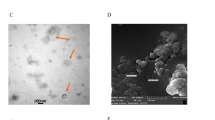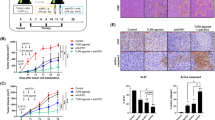Abstract
Efficient induction of functional competent myeloid-derived suppressor cells (MDSCs) will be critical for the clinical application of MDSCs to treat autoimmune diseases and to induce transplantation immune tolerance. In the present study, we tried to establish the MDSC induction system with M-CSF and tumor necrosis factor α (TNFα) and investigated the immunosuppressive function of M-CSF + TNFα-induced MDSCs in transplant mouse models. Monocytic MDSCs (M-MDSCs) were induced by culture of the non-adherent mouse bone marrow cells with M-CSF or M-CSF + TNFα, respectively, for 7 days. Phenotype analysis revealed that the majority of M-CSF- and M-CSF + TNFα-induced MDSCs express F4/80. The addition of TNFα in the induction period increased Gr-1, Ly6C, CD80, and CD274 expressions on these cells. M-CSF + TNFα-induced M-MDSCs showed poor TNFα, IL-12, and IL-6 expressions after lipopolysaccharide (LPS) stimulation and decreased arginase 1 (Arg-1) and Fizz expressions after IL-4 stimulation compared with M-CSF-induced M-MDSCs. M-CSF + TNFα-induced M-MDSCs showed enhanced ability to suppress T cell proliferation and cytokine production than M-CSF-induced M-MDSCs. M-CSF + TNFα-induced M-MDSCs express high levels of inducing nitric oxide synthase (iNOS) and blocking iNOS activity by a chemical inhibitor or gene deficiency significantly reversed the inhibitory effects of M-CSF + TNFα-induced M-MDSCs on T cells. Adoptive transfer of M-CSF + TNFα-induced M-MDSCs promoted immune tolerance in a male-to-female skin-grafted mice, but M-CSF + TNFα-induced iNOS-deficient M-MDSCs failed to do so. Thus, M-CSF + TNFα-induced M-MDSCs have powerful immunosuppressive activity, which is mediated by an iNOS-dependent pathway. M-CSF + TNFα-induced M-MDSCs can promote immune tolerance to donor antigens in a transplant mouse model.
Key message
-
The combination of M-CSF and TNFα efficiently induces functional M-MDSCs in vitro.
-
M-CSF + TNFα-induced M-MDSCs promote immune tolerance in a transplant mouse model.
-
The immunosuppressive ability of M-CSF + TNFα-induced M-MDSCs is dependent on iNOS.




Similar content being viewed by others
References
Talmadge JE, Gabrilovich DI (2013) History of myeloid-derived suppressor cells. Nat Rev Cancer 13:739–U779
Bennett JA, Rao VS, Mitchell MS (1978) Systemic bacillus Calmette-Guerin (BCG) activates natural suppressor cells. Proc Natl Acad Sci U S A 75:5142–5144
Slavin S, Strober S (1979) Induction of allograft tolerance after total lymphoid irradiation (Tli)—development of suppressor cells of the mixed leukocyte reaction (Mlr). J Immunol 123:942–946
Ostrand-Rosenberg S, Sinha P (2009) Myeloid-derived suppressor cells: linking inflammation and cancer. J Immunol 182:4499–4506
Condamine T, Ramachandran I, Youn JI, Gabrilovich DI (2015) Regulation of tumor metastasis by myeloid-derived suppressor cells. Annu Rev Med 66:97–110
Gabrilovich DI, Nagaraj S (2009) Myeloid-derived suppressor cells as regulators of the immune system. Nat Rev Immunol 9:162–174
Wu T, Zhao Y, Zhao Y (2014) The roles of myeloid-derived suppressor cells in transplantation. Expert Rev Clin Immunol 10:1385–1394
Movahedi K, Guilliams M, Van den Bossche J, Van den Bergh R, Gysemans C, Beschin A, De Baetselier P, Van Ginderachter JA (2008) Identification of discrete tumor-induced myeloid-derived suppressor cell subpopulations with distinct T cell-suppressive activity. Blood 111:4233–4244
Peranzoni E, Zilio S, Marigo I, Dolcetti L, Zanovello P, Mandruzzato S, Bronte V (2010) Myeloid-derived suppressor cell heterogeneity and subset definition. Curr Opin Immunol 22:238–244
Munn DH, Shafizadeh E, Attwood JT, Bondarev I, Pashine A, Mellor AL (1999) Inhibition of T cell proliferation by macrophage tryptophan catabolism. J Exp Med 189:1363–1372
Kung JT, Brooks SB, Jakway JP, Leonard LL, Talmage DW (1977) Suppression of in vitro cytotoxic response by macrophages due to induced arginase. J Exp Med 146:665–672
Pesce JT, Ramalingam TR, Mentink-Kane MM, Wilson MS, El Kasmi KC, Smith AM, Thompson RW, Cheever AW, Murray PJ, Wynn TA (2009) Arginase-1-expressing macrophages suppress Th2 cytokine-driven inflammation and fibrosis. Plos Pathog 5:e1000371
Bingisser RM, Tilbrook PA, Holt PG, Kees UR (1998) Macrophage-derived nitric oxide regulates T cell activation via reversible disruption of the Jak3/STAT5 signaling pathway. J Immunol 160:5729–5734
Hongo D, Tang X, Baker J, Engleman EG, Strober S (2014) Requirement for interactions of natural killer T cells and myeloid-derived suppressor cells for transplantation tolerance. Am J Transplant 14:2467–2477
Rossner S, Voigtlander C, Wiethe C, Hanig J, Seifarth C, Lutz MB (2005) Myeloid dendritic cell precursors generated from bone marrow suppress T cell responses via cell contact and nitric oxide production in vitro. Eur J Immunol 35:3533–3544
Marigo I, Bosio E, Solito S, Mesa C, Fernandez A, Dolcetti L, Ugel S, Sonda N, Bicciato S, Falisi E et al (2010) Tumor-induced tolerance and immune suppression depend on the C/EBP beta transcription factor. Immunity 32:790–802
Highfill SL, Rodriguez PC, Zhou Q, Goetz CA, Koehn BH, Veenstra R, Taylor PA, Panoskaltsis-Mortari A, Serody JS, Munn DH et al (2010) Bone marrow myeloid-derived suppressor cells (MDSCs) inhibit graft-versus-host disease (GVHD) via an arginase-1-dependent mechanism that is up-regulated by interleukin-13. Blood 116:5738–5747
Zhou Z, French DL, Ma G, Eisenstein S, Chen Y, Divino CM, Keller G, Chen SH, Pan PY (2010) Development and function of myeloid-derived suppressor cells generated from mouse embryonic and hematopoietic stem cells. Stem Cells 28:620–632
Sade-Feldman M, Kanterman J, Ish-Shalom E, Elnekave M, Horwitz E, Baniyash M (2013) Tumor necrosis factor-alpha blocks differentiation and enhances suppressive activity of immature myeloid cells during chronic inflammation. Immunity 38:541–554
Hou Y, Lin H, Zhu L, Liu Z, Hu F, Shi J, Yang T, Shi X, Guo H, Tan X et al (2014) The inhibitory effect of IFN-gamma on protease HTRA1 expression in rheumatoid arthritis. J Immunol 193:130–138
Zhu L, Yang T, Li L, Sun L, Hou Y, Hu X, Zhang L, Tian H, Zhao Q, Peng J et al (2014) TSC1 controls macrophage polarization to prevent inflammatory disease. Nat Commun 5:4696
Wu T, Sun C, Chen Z, Zhen Y, Peng J, Qi Z, Yang X, Zhao Y (2012) Smad3-deficient CD11b(+)Gr1(+) myeloid-derived suppressor cells prevent allograft rejection via the nitric oxide pathway. J Immunol 189:4989–5000
Chen H, Zhang L, Zhang H, Xiao Y, Shao L, Li H, Yin H, Wang R, Liu G, Corley D et al (2013) Disruption of TSC1/2 signaling complex reveals a checkpoint governing thymic CD4+ CD25+ Foxp3+ regulatory T-cell development in mice. FASEB J 27:3979–3990
Hu X, Liu G, Hou Y, Shi J, Zhu L, Jin D, Peng J, Zhao Y (2012) Induction of M2-like macrophages in recipient NOD-scid mice by allogeneic donor CD4(+)CD25(+) regulatory T cells. Cell Mol Immunol 9:464–472
Escors D, Liechtenstein T, Perez-Janices N, Schwarze J, Dufait I, Goyvaerts C, Lanna A, Arce F, Blanco-Luquin I, Kochan G et al (2013) Assessing T-cell responses in anticancer immunotherapy: dendritic cells or myeloid-derived suppressor cells? Oncoimmunology 2:e26148
Hamilton TA, Zhao C, Pavicic PG Jr, Datta S (2014) Myeloid colony-stimulating factors as regulators of macrophage polarization. Front Immunol 5:554
Fleetwood AJ, Lawrence T, Hamilton JA, Cook AD (2007) Granulocyte-macrophage colony-stimulating factor (CSF) and macrophage CSF-dependent macrophage phenotypes display differences in cytokine profiles and transcription factor activities: implications for CSF blockade in inflammation. J Immunol 178:5245–5252
Lacey DC, Achuthan A, Fleetwood AJ, Dinh H, Roiniotis J, Scholz GM, Chang MW, Beckman SK, Cook AD, Hamilton JA (2012) Defining GM-CSF- and macrophage-CSF-dependent macrophage responses by in vitro models. J Immunol 188:5752–5765
Mia S, Warnecke A, Zhang XM, Malmstrom V, Harris RA (2014) An optimized protocol for human M2 macrophages using M-CSF and IL-4/IL-10/TGF-beta yields a dominant immunosuppressive phenotype. Scand J Immunol 79:305–314
Mohring J, Schoun J, Kintz J, Robinson IC, McNeill JR (1983) Vasopressin and oxytocin content are decreased in the brain stems of spontaneously hypertensive rats. Neuroendocrinology 36:457–461
Balkwill F (2006) TNF-alpha in promotion and progression of cancer. Cancer Metastasis Rev 25:409–416
Tack CJ, Kleijwegt FS, Van Riel PL, Roep BO (2009) Development of type 1 diabetes in a patient treated with anti-TNF-alpha therapy for active rheumatoid arthritis. Diabetologia 52:1442–1444
Condamine T, Kumar V, Ramachandran IR, Youn JI, Celis E, Finnberg N, El-Deiry WS, Winograd R, Vonderheide RH, English NR et al (2014) ER stress regulates myeloid-derived suppressor cell fate through TRAIL-R-mediated apoptosis. J Clin Invest 124:2626–2639
Sinha P, Okoro C, Foell D, Freeze HH, Ostrand-Rosenberg S, Srikrishna G (2008) Proinflammatory S100 proteins regulate the accumulation of myeloid-derived suppressor cells. J Immunol 181:4666–4675
Acknowledgments
The authors wish to thank Dr. Yuzhu Hou a for his kind review of the manuscript; Mrs. Qing Meng, Mr. Yabing Liu, and Dr. Xiaoqiu Liu for their expert technical assistance; Mrs. Ling Li for her excellent laboratory management; and Mr. Baisheng Ren for his outstanding animal husbandry. This work was supported by grants from the National Science and Technology Major Project “prevention and treatment of AIDS and virus hepatitis”(2014ZX10002002-001-002, J.L., Y.Z.), the National Basic Research Program of China (2010CB945301, 2011CB710903, Y.Z.), the National Natural Science Foundation of China for General and Key Programs (C81130055, C81072396, Y.Z.), Knowledge Innovation Program of the Chinese Academy of Sciences (XDA04020202-19, Y.Z.), and the CAS/SAFEA International Partnership Program for Creative Research Teams (Y.Z.).
Author contributions
Fan Yang (hopscotch@126.com), Yang Li (liyang.zhe.happy@163.com), and Tingting Wu (wtt1983_18@aliyun.com) designed and did the experiments, analyzed the data, and contributed to writing the manuscript.
Ning Na (nngg20102009@hotmail.com) analyzed data, comments on the project, and revised the manuscript.
Yang Zhao (dongdong_1221@126.com) performed the flow cytometry assays and analyzed the data.
Weiguo Li (041011@htu.edu.cn) analyzed the data and designed the experiments.
Chenlu Han (hanchenlu110@163.com) did the PCR assays.
Lianfeng Zhang (zhanglf@cnilas.org) provided the animal models and revised the manuscript.
Jun Lu (lujun98@ccmu.edu.cn) and Yong Zhao (zhaoy@ioz.ac.cn) designed the experiments, analyzed the data, wrote the manuscript, and provided the overall direction.
Author information
Authors and Affiliations
Corresponding authors
Ethics declarations
Conflict of interest
The authors declare no competing financial interests.
Additional information
Fan Yang, Yang Li and Tingting Wu contributed equally to this work.
Electronic supplementary material
Below is the link to the electronic supplementary material.
ESM 1
(PDF 490 kb)
Rights and permissions
About this article
Cite this article
Yang, F., Li, Y., Wu, T. et al. TNFα-induced M-MDSCs promote transplant immune tolerance via nitric oxide. J Mol Med 94, 911–920 (2016). https://doi.org/10.1007/s00109-016-1398-z
Received:
Revised:
Accepted:
Published:
Issue Date:
DOI: https://doi.org/10.1007/s00109-016-1398-z




